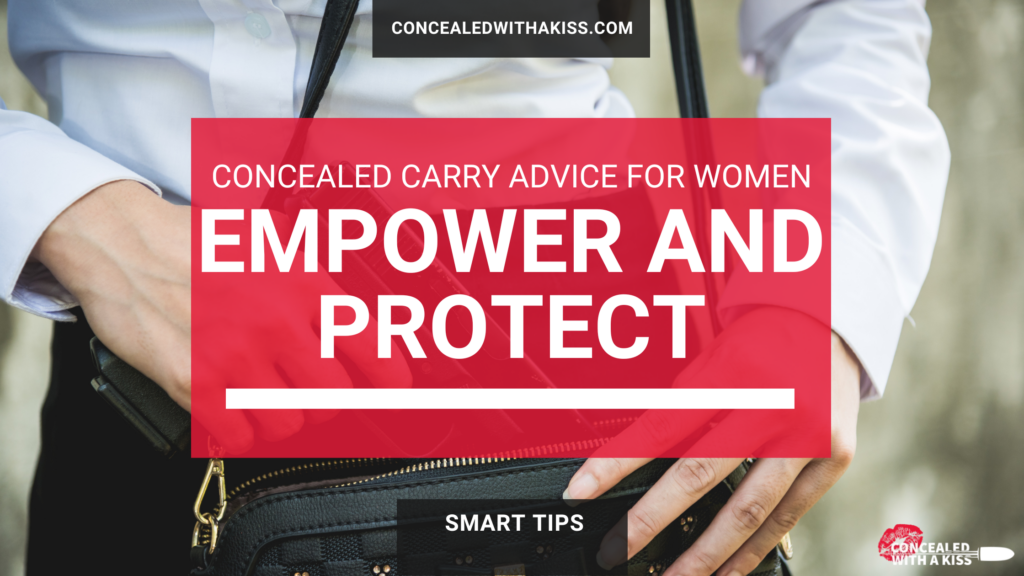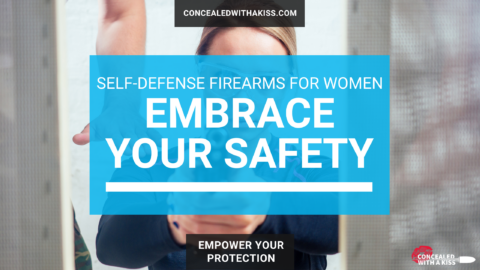As a woman, your right to personal protection is paramount. Carrying a concealed firearm is a responsible choice for many seeking to ensure their own safety. Concealed carry for women presents unique challenges, but with the right approach to concealability and training, you can effectively defend yourself while maintaining discretion. Understanding the dynamics of self-defense and incorporating firearms into your personal safety strategy requires a mindset that prioritizes preparedness and situational awareness.
Navigating the landscape of concealed carry involves more than selecting a firearm; it’s about adapting your lifestyle and wardrobe to accommodate your choice without compromising on comfort or femininity. This means exploring holsters and carrying methods that work with women’s diverse body types and clothing styles. Emphasizing responsible gun ownership, it is essential that you are well-informed on the second amendment rights and local laws pertaining to carrying a concealed weapon.
To carry with confidence, you must invest in regular training to hone your skills and ensure you can react effectively under stress. This goes beyond marksmanship to include scenario-based training that sharpens your ability to detect, avoid, and if necessary, respond to threats with the level headedness required in critical situations. Your commitment to carrying a concealed firearm should be mirrored by a commitment to maintaining the expertise and readiness for whatever you might encounter.
Understanding Concealed Carry: Foundation for Women’s Self-Defense
Concealed carry can be a pivotal component of personal safety. Your understanding of the essentials can help foster confidence and proficiency in self-defense.
An Overview of Concealed Carry Principles
Concealed carry involves carrying a handgun in a manner that is hidden from public view. It is a lawful practice permitted in many areas, with specific regulations varying by location. When you decide to carry concealed, you commit to the responsibility of handling and storing a firearm safely. Training is essential; it ensures you are knowledgeable about handling firearms and aware of the legalities of concealed carry.
The Significance of Concealed Carry for Women’s Safety
For women, concealed carry is not just a right; it’s a practical self-defense option. Statistics show that women who are trained and equipped to defend themselves can significantly reduce their risk of victimization. Concealed firearms empower you with a defense mechanism that is readily accessible, giving a sense of security in various situations. Moreover, the element of surprise inherent in concealed carry can be advantageous in a threatening encounter.
Myths vs. Facts: Debunking Common Misconceptions
Myth: Concealed carry is predominantly for men.
Fact: An increasing number of women are becoming concealed carry permit holders, recognizing the benefits of this self-defense tool.
Myth: Carrying concealed firearms ensures safety.
Fact: While it can enhance safety, there is no absolute guarantee. Training, awareness, and legal knowledge are key to effective self-defense.
By dispelling misconceptions, you become more informed, which is crucial for making decisions about your personal safety. Efficient use of concealed carry involves continuous learning and commitment. Research, education, and practice are necessary to ensure that if you choose to carry a concealed weapon, you do so proficiently and lawfully. Being informed allows you to be confident in your self-defense strategy.
Selecting the Right Concealment Method: Holsters and Clothing
When choosing a method to carry concealed, consider how holster options and clothing can enhance both safety and accessibility. Each holster type and garment choice should align with your daily activities while fitting comfortably with your body type.
Holster Options Designed for Women’s Wear
Women have unique choices in holsters specially designed to accommodate different outfits and body shapes. Bra holsters cater to a discreet under-clothing method, ideal for dresses and tops without belts. For waistband carry, look for crossbreed holsters that fit snugly against your body and can be hidden seamlessly under layers. With any holster, ensure that it provides a secure fit for your firearm, minimizes printing, and allows for a smooth, quick draw.
- Bra Holsters: Ideal for dresses; fits under a bra band
- Crossbreed Holsters: Versatile; fits snugly for various body types and clothing styles
Dressing for Stealth and Quick Access
Your clothing choices play a critical role in effective concealed carry. Opt for garments that are both tailored and flexible to accommodate a concealed weapon without restricting your movement. A gun belt can be a supportive addition when wearing pants or skirts, aiding in keeping the holster firmly in place. Lastly, choose materials and styles that prevent the outline of your firearm from being visible, known as “printing.”
- Tailored yet flexible clothes: For ease of movement and reduced printing
- Gun Belt: Adds support and stability for holsters
Accessorizing for Concealment: Purses and More
Besides traditional holsters and clothing, accessories such as purses designed for concealed carry can be a convenient option. Brands like Concealed Carrie offer stylish bags with dedicated compartments for your firearm. When opting for purse carry, emphasize safety by selecting a purse with a secure holster compartment that prevents unintentional movement of the firearm and ensures the trigger is protected.
- Concealed Carrie Purses: Stylish with dedicated firearm compartments
- Purse Carry Considerations: Secure holster compartment to protect the trigger and prevent shifting
Firearm Choices: What Matters for Concealed Carry?
Selecting the right firearm for concealed carry is a balance of size, firepower, and personal comfort. Your choice impacts ease of use, concealability, and defensive capability.
Compact Size vs. Firepower: Finding the Balance
When choosing a concealed carry handgun, the trade-off between compact size and firepower is crucial. Compact pistols are more concealable and lighter, making them easier to carry for extended periods. However, they often hold fewer rounds and can have more felt recoil due to their lighter weight. On the other hand, larger firearms can offer more firepower and a steadier grip, which may improve accuracy and confidence.
Consider:
- Size and Weight: A heavier firearm can reduce recoil, but might be more challenging to conceal and carry comfortably.
- Capacity: More rounds can offer a tactical advantage, but may increase the size of the handgun.
Revolver or Semi-Auto? Understanding the Pros and Cons
Your choice between a revolver and a semi-automatic pistol affects reliability, ease of use, and capacity.
Revolver:
- Pros: Simple mechanics, known for reliability, and ease of use.
- Cons: Limited capacity, generally heavier trigger pull, slower to reload.
Semi-Auto:
- Pros: Higher capacity, faster reload times, typically lighter trigger pull.
- Cons: More complex parts can be more susceptible to malfunctions if not properly maintained.
Calibers and Women: Performance vs Comfort
A handgun’s caliber determines both its stopping power and its recoil. More powerful calibers can stop threats more effectively but often come with increased recoil that can be uncomfortable and harder to control, affecting accuracy and follow-up shots. It’s essential to find a caliber that balances stopping power with a recoil level that you can manage comfortably.
Popular Choices:
- .380 ACP: Moderate stopping power with manageable recoil.
- 9mm: Preferred balance of stopping power and recoil; notably, the Glock 19 is a widely respected model for its reliability and size.
- .45 ACP: Higher stopping power, typically more recoil.
Training For Real-World Scenarios
Effective self-defense requires not only owning a firearm but also committing to practical, scenario-based training. Enhancing your real-world response capabilities involves more than static shooting; it requires a dynamic approach that prepares you for unpredictable situations.
Practical Training Drills for Accuracy and Speed
1. Drill Setup:
- Distances: Vary your practice distances (7, 15, 25 yards).
- Targets: Use silhouette targets to mimic body shapes.
2. Drills to Practice:
- Rapid Fire: Shoot multiple rounds quickly to improve response times.
- Controlled Pairs: Consistently hit a target with two shots.
- Drawing Fire: Practice drawing from concealment and firing accurately.
Tips: Regular range time is crucial. Always wear eye and ear protection during practice to ensure safety.
Engaging with Simulations: Preparing for the Unexpected
Simulation Training:
- Utilize shooting simulators with life-like scenarios.
- Engage in force-on-force training using non-lethal training weapons.
Key Focus:
- Adaptability to changing situations.
- Decision-making under simulated stress.
Why Simulations Matter:
Simulations expose you to diverse scenarios, helping you react effectively when under real-world pressure.
Stress Management: Staying Calm Under Pressure
- Breathing Techniques: Learn and practice controlled breathing to maintain calm.
- Mental Rehearsal: Visualize various scenarios and your responses.
Mental Conditioning:
- Regularly practice stress inoculation drills.
- Incorporate timed drills to induce stress during training.
Ongoing Training Tip: Incorporate stress management into your ongoing training regimen to build resilience and maintain performance under duress.
Legal Landscape: Navigating Concealed Carry Laws for Women
Before you consider carrying a concealed weapon for your protection, it’s crucial to understand the varied legal landscape. Familiarizing yourself with specific regulations and preparing adequately for the permit process will ensure you stay within the confines of the law.
State-by-State Guide to Concealed Carry Regulations
Concealed carry laws in the United States can differ dramatically from state to state. Some states offer what is known as “constitutional carry,” where no permit is required for concealed carry, while others may have strict requirements and permits. A few key aspects to note:
- Shall-Issue vs May-Issue: In “shall-issue” states, law enforcement must issue a concealed carry permit if you meet the basic requirements, while “may-issue” states give law enforcement more discretion.
- Reciprocity: Some states recognize permits from other states—this is known as reciprocity. Always check if your permit is honored in the state you plan to visit.
- Restricted Areas: Even with a permit, certain areas such as schools, government buildings, or private businesses may be off-limits for concealed weapons.
To stay current, it is advised to regularly check the National Rifle Association (NRA) website or a state’s official government page for any changes in laws.
Permit Process: What to Expect and How to Prepare
When applying for a concealed carry permit, anticipate multiple steps that may include:
- Documentation: Provide identification, proof of residency, and oftentimes, proof of firearm training.
- Background Check: A comprehensive check to ensure you have a clean legal record.
- Training Requirements: States typically mandate specific firearm training or safety courses.
- Fees: Be prepared to pay application and renewal fees that vary by state.
To prepare, gather your documents in advance, complete any required training programs, and budget for the associated costs. Understanding these steps upfront will make the process more manageable.
Understanding Your Rights and Responsibilities
As a permit holder, knowing your rights is as critical as understanding your responsibilities. Remember:
- Self-Defense Laws: Be aware of your state’s self-defense laws, including “Stand Your Ground” and “Duty to Retreat” laws.
- Law Enforcement Encounters: If stopped by law enforcement, you must disclose that you are carrying a concealed weapon if it is required by local laws.
- Concealed Carry Insurance: Consider concealed carry insurance to protect yourself against legal fees in the event you need to use your weapon in self-defense.
Stay informed of your legal obligations and ensure you adhere to all regulations to carry responsibly and legally.




